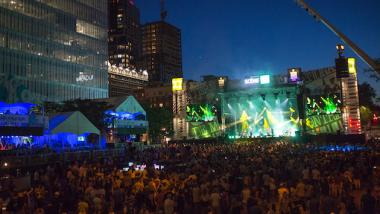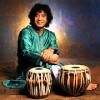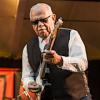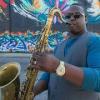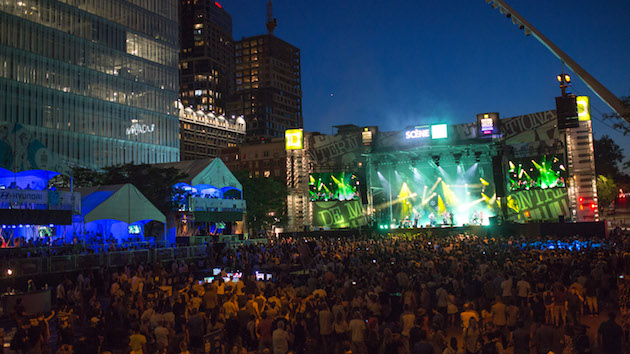
“This is such a warm place for us to be,” Zakir Hussain declared after his performance with reed man Chris Potter and bassist Dave Holland, “and I’m not just talking about the weather.”
Raised in India and now based in San Anselmo, Hussain knows from hot weather. He’d been touring with Potter and Holland since they’d come together in the ensemble Crossroads at SFJAZZ last fall. But the climate for this year’s Festival International de Jazz de Montréal, in which Hussain and company appeared on the evening of July 4, had been unusually warm. The weather, though, managed to wilt neither the overall high spirits on and off the stage nor the hospitality of the host city, which Hussain remembered from earlier visits.
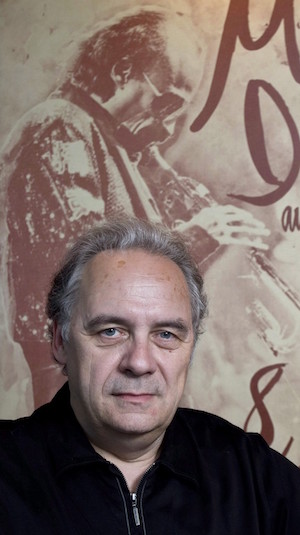
“In Montreal,” festival founder and manager André Menard had told me, “people are good-natured in general. And we try to teach [our paid staff] that music and musicians come first.” Audiences are not a distant second. An entire downtown neighborhood, centering on the rue Sainte-Catherine, is rendered auto-free to help accommodate what Guinness has certified as the world’s largest jazz festival enterprise, with over 500 concerts across 13 indoor venues and seven massive outdoor stages, as well as a couple of smaller clubs.
When Menard launched the festival in 1980, “We felt that jazz was not only an American music anymore,” he pointed out. “It had spread around the world and come back in all sorts of different echoes. And since then, we’d always tried to include music which is in the neighborhood of jazz, including African, salsa, and reggae. Of course, jazz and blues are the trunk of the tree, but it is a tree with leaves of many colors. And just as jazz has taken in much, it has also percolated all over popular music.” Even more than at most contemporary festivals, there’s much to match acquired tastes, and much more to discover, or rediscover.
On Monday, July 2, my first evening and the fifth day of the 10-day festival, I went to one of the large indoor ticketed venues at the Place des Arts — Montreal’s equivalent of Lincoln Center — to see (and hear) Herbie Hancock. The legendary jazz keyboardist and composer is now 78, and didn’t choose to act like it, physically or creatively. He made the most of the Montreal venue’s sophisticated audio and lighting system — far beyond anything possible at the Monterey Jazz Festival — to mount a loud, heavily electronically-effected act, in which his and his band’s instrumental virtuosity were displayed, but the aesthetics of harmony and melody not so much, even on a rendition of “Cantaloupe Island,” one of his early hits. His opening, act, L.A.-based 33-year-old bass guitarist Stephen Lee Bruner, aka Thundercat, tended even more to favor effect over content, and it was no surprise that he’ll be collaborating with Hancock on an upcoming recording. To give the diabolic its due, Hancock seems to be doing what his old boss Miles Davis did with him some five decades ago: positioning himself near the fountain of youth so that he can try getting high on something new.
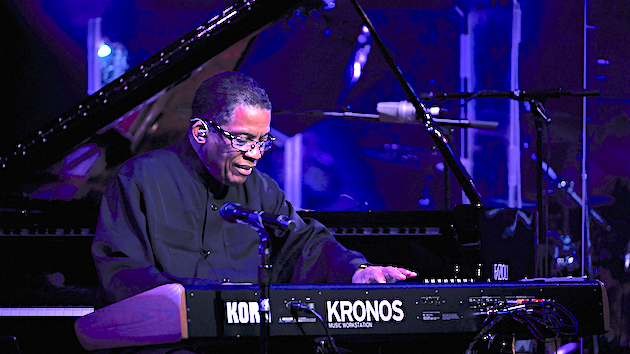
On Tuesday at 6 p.m., which is when most of the ticketed events start (though the outdoor events and food and drink booths are active at Noon), I discovered L’Astral, the much smaller venue downstairs from the press office. It was better suited to showcasing pianist François Bourassa, one of the many Canadian artists booked by the festival but mostly little known by U.S. audiences. His approach might qualify as the antipode of Hancock’s, rather shadowy and dolorous. Later, back at the Wilfried-Pelletier, guitarist Ben Harper, before his set with harmonica veteran Charlie Musselwhite, was presented with the Prix Ella-Fitzgerald, one of six awards presented each year, announced (as in most cases) in both French and English. Fitzgerald, like the rest of the artists memorialized by the awards (a trademark of this festival), had herself appeared in Montreal. The set, though, was strong, crowd-pleasing blues rather than jazz, Harper at times moving his magic to pedal steel. Music continued, on this and all nights, past midnight on several stages.
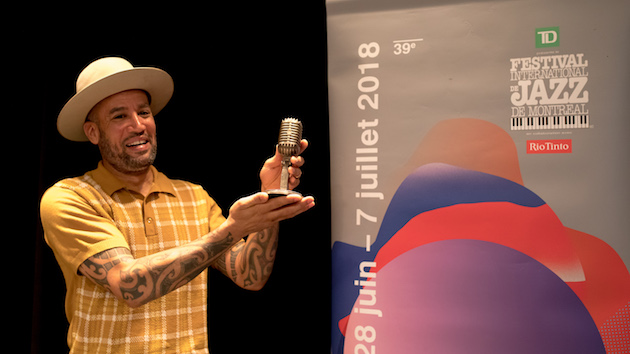
Gésu is a church a half-block from the rue Sainte-Catherine and one of the favorite venues among fussy festivalgoers. I was advised early on Wednesday to check out pianist Jeremy Dutcher by Maurin Auxemery, who assists in booking world music acts and performers from the First Nations, the Canadian term for descendants of the Indian tribes who’d occupied the continent long before the arrival of English and French European settlers. Far more than is the policy south of the border, the Canadian government and much of the diverse population are financially, legally, and socially supportive of the tribes.
Dutcher, classically trained, sang in Wolastoq, the language of a tribe related to the Mohawk nation. He interacted, vocally and on his keyboard, with the chanting voice of his great-grandfather recorded by an ethnologist a hundred years ago. It was both heartwarming and sacred.
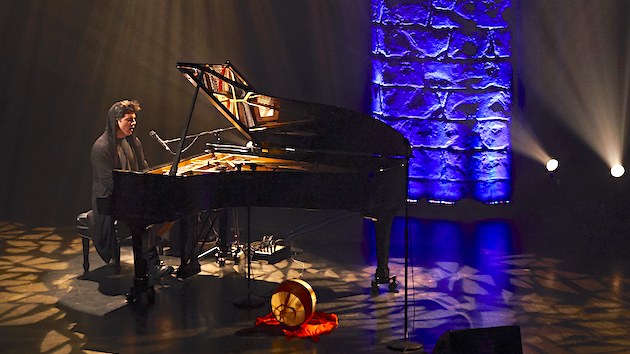
At a featured Wednesday evening concert, Festival founder Menard presented Zakir Hussain with the Prix Antonio-Carlos-Jobim, named for the late prolific and successful Brazilian songsmith who’d himself visited the festival and donated his personal guitar to its collection of instruments. Hussain, with Chris Potter and Dave Holland, went on to recreate what still sounds like a brave new world music, the instruments and players sharing each other’s cultural traditions and individual inspirations. Holland revealed afterwards that he’d been playing a loaner bass, since his own had been delayed in transit, and that he’d lost a string during the performance. It didn’t hamper the excitement much. Canadian pianist and composer Renee Rosnes opened the evening with receipt of the Prix Oscar-Petersen and a playful but rather placid set.
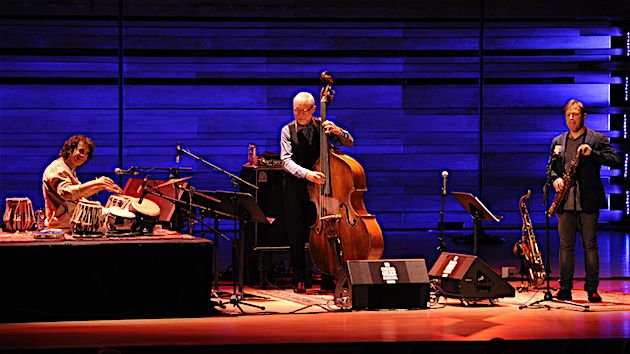
L’Astral being situated right next to a delightful café, I asked a pair of Quebecois women to save me a place in the general seating venue while I consumed a quick Thursday dinner. The women were visibly excited about seeing local hero Jordan Officer, who looked and acted rather like a young Johnny Cash and favored a repertoire of covers and originals in country, rock, and blues modes. A crowd-pleasing hayride howler, Officer also switched back and forth between strapped-on electric and pedal steel guitars, playing both handily. His original English lyrics read as charmingly goofy, but he sang and bantered with the crowd mostly in French. This was yet more evidence of how very much of a separate country Quebec can seem, and that’s really part of the thrill.
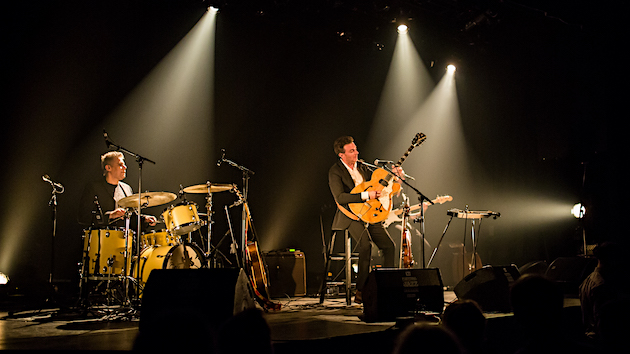
Provincial pride had no doubt inspired the recommendation that I witness Quebec favorite Beyries at the spacious, high-tech Théâtre Maisonneuve at her eight o’clock show. She presented a mostly original and apparently familiar set of singer-songwriter material, much of it triste (with traces of Parisian chanson) but elevated, by the theatrical effects and a talented crew of musicians and backup singers, to a compellingly devotional level. Portland, Oregon-based Alela Diane, possessed of a vibrant Joni Mitchell-like voice, opened.
Two of Montreal’s jazz clubs offered intimate settings for acts promoted in the festival’s official program. On Friday evening, a couple of subway lines away from the rue Sainte-Catherine, the dinner house Dièse Onze hosted the quartet of saxophonist Jean-Pierre Zanella playing Brazilian-flavored standards and originals, artfully arranged and improvised. It was a chance to spend some time away from the bustle and enjoy some good food in the process.
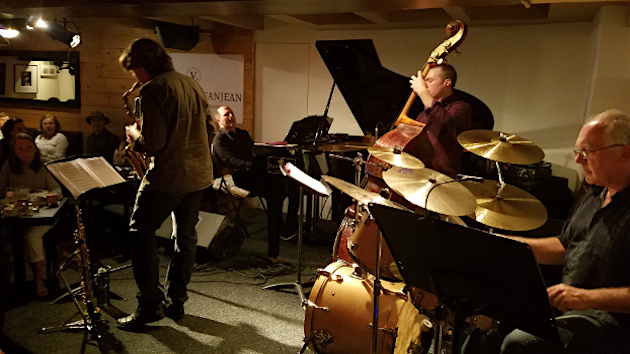
Also, a musical theater piece dubbed SLĀV, directed by the innovated Robert Lepage and scheduled to run on all but one of the festival’s evenings, was canceled after its initial performance. The festival press was officially informed only that lead performer Betty Bonifassi had sustained an injury, but outside news sources revealed also that the show had been forcibly protested for casting mostly white actors, under white direction, in a tale about African-American slavery. Taking into account its reputation as “an inclusive, peaceful, and safe event,” festival administrators, in agreement with SLĀV’s producers, decided not to relaunch the show and to meet with members of the city’s concerned black community.
It’s a rare festival which leaves you wishing you’d arrived earlier and stayed later. And that you’d been able to be more than one place at one time. Famed actress and musical offspring Charlotte Gainsbourg had helped launch this year's event on June 26, with an evening of song, and jazz luminaries in the lineup included Archie Shepp, Dee Dee Bridgewater, Benny Golson, and Bobby McFerrin. Jethro Tull made a stop on their 50th-anniversary tour, and there were rock-friendly offerings from Boz Skaggs and a tribute to the Beatles’ White Album.
Although Menard still counts his festival a “best-kept secret” elsewhere on the continent, it’s become more and more of a good excuse for going through the rigors of passports and customs. The late bassist Charlie Haden raved to me about how Montreal had honored him with a week full of varied bookings. In addition, the festival has become a model of the economic power of performed music. “We bring in about 75 million dollars a year,” Menard beams, and then chuckles. “Can you believe that jazz could do that?”

